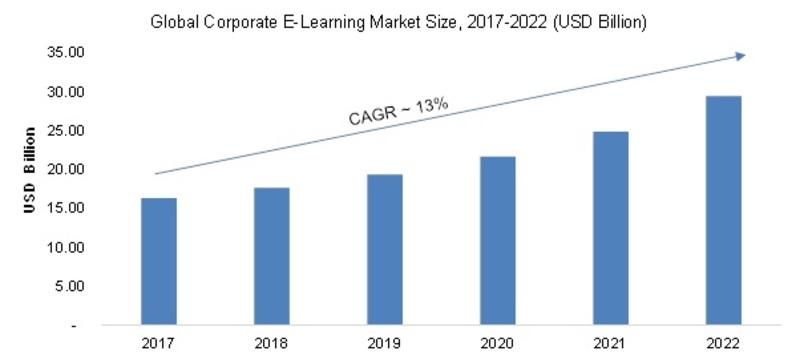Press release
Explore the future of avionics with cutting-edge trends and growth forecasts for the US, France, Japan, Australia, and the UAE.
The avionics industry, a crucial subset of the aerospace sector, is a dynamic and rapidly evolving field that focuses on the design, development, production, and maintenance of electronic systems used on aircraft, artificial satellites, and spacecraft. The term "avionics" is a portmanteau of "aviation" and "electronics," and it encompasses a wide range of systems that are essential for safe and efficient air travel and space exploration. According to the research report, "Global Avionics Market Outlook, 2029" published by Bonafide Research, the market is anticipated to cross USD 80 Billion by 2029, increasing from USD 52.58 Billion in 2023. The market is expected to grow with 7.70% CAGR by 2024-29. The advent of technologies such as artificial intelligence (AI), machine learning, and quantum computing presents new opportunities for enhancing avionics capabilities. The aviation industry faces pressure to reduce its environmental footprint, prompting the development of eco-friendly avionics solutions. Efforts to optimize fuel efficiency, minimize emissions, and explore alternative propulsion systems drive innovation in avionics design and operation. The emergence of UAM initiatives, including electric vertical takeoff and landing (eVTOL) aircraft, heralds a new era of urban air transportation. Avionics tailored for UAM platforms must prioritize safety, reliability, and scalability to support the seamless integration of aerial mobility services into urban landscapes. The Next Generation Air Transportation System (NextGen) is a U.S.-led initiative to modernize the national airspace system. It leverages advanced technologies like Automatic Dependent Surveillance-Broadcast (ADS-B) and Performance-Based Navigation (PBN) to improve safety, efficiency, and capacity. With the growing concern over carbon emissions, there is an increasing focus on developing electric and hybrid-electric aircraft. These aircraft use electric motors powered by batteries or fuel cells, offering a more sustainable alternative to traditional jet fuel-powered aircraft.
Commercial aviation serves as the backbone of modern air transportation, facilitating the movement of millions of passengers and cargo across the globe each day. With such a monumental responsibility comes an inherent need for advanced avionics systems that not only meet regulatory standards but also surpass expectations in terms of safety, reliability, and efficiency. The sheer scale and complexity of commercial aviation operations demand avionics solutions that can handle the intricacies of managing large fleets of aircraft, navigating congested airspace, and maintaining constant communication with air traffic control and other aircraft. Line fit refers to the practice of integrating avionics systems directly into new aircraft during the manufacturing process, rather than retrofitting them after the aircraft has been built. This approach offers several advantages that have cemented line fit as a leading practice in the avionics industry. By integrating avionics systems during production, aircraft manufacturers can ensure seamless compatibility and optimal integration with other onboard systems, such as flight controls, navigation aids, and communication networks. This seamless integration minimizes the risk of compatibility issues, reduces installation time and costs, and streamlines the overall manufacturing process. Furthermore, line fit avionics undergo rigorous testing and validation procedures to meet stringent regulatory standards and certification requirements before being integrated into new aircraft. Navigation systems are at the forefront of the industry primarily because of their indispensable role in guiding aircraft through the skies with precision and accuracy. The safety and efficiency of flight operations rely heavily on the ability of navigation systems to provide pilots with reliable information regarding their aircraft's position, altitude, speed, and heading. This information is essential for accurate route planning, adherence to air traffic control instructions, and avoidance of obstacles and hazardous weather conditions. Modern navigation systems leverage a combination of technologies to achieve precise positioning and navigation capabilities. Global Navigation Satellite Systems (GNSS), such as GPS (Global Positioning System), serve as the backbone of modern navigation systems, providing continuous and accurate positioning information to aircraft anywhere on the globe.
For more insights: https://www.bonafideresearch.com/product/240389961/global-avionics-market
North America remains a dominant player in the global avionics market, largely driven by the United States, which is home to some of the world's largest aerospace and defense manufacturers, including Boeing and Lockheed Martin. The region benefits from significant investments in advanced avionics systems, particularly in military and commercial aviation. The U.S. government's focus on modernizing military aircraft and the rising demand for next-generation avionics in commercial aircraft drive market growth. Canada also contributes to the market, with a strong aerospace sector that supports both civil and military aviation. The push towards more autonomous and integrated avionics systems, along with the adoption of the latest communication, navigation, and surveillance technologies, continues to propel the market in North America. Europe's avionics market is robust, with key contributions from countries like Germany, France, and the United Kingdom. The presence of major aerospace companies such as Airbus and Thales underpins the region's strength in the market. European countries are heavily investing in the development of advanced avionics systems, focusing on enhancing safety, efficiency, and connectivity. The market is also influenced by the European Union's stringent regulations and environmental standards, which drive innovation in avionics technologies aimed at reducing emissions and improving fuel efficiency. Additionally, the region's emphasis on research and development, particularly in unmanned aerial vehicles (UAVs) and electric aircraft, is expected to further stimulate market growth. The Asia-Pacific avionics market is experiencing rapid growth, driven by increasing air traffic and significant investments in both commercial and military aviation. China, Japan, and India are the key players in this region. China's ambitious aerospace programs and its push to develop indigenous aircraft, such as the COMAC C919, are major factors boosting the demand for advanced avionics systems.
Japan's focus on technological innovation and India's expanding defense sector also contribute to the market's expansion. The region's burgeoning middle class and growing tourism industry are driving demand for new aircraft, which in turn fuels the need for cutting-edge avionics. Additionally, the rising adoption of UAVs for commercial and defense purposes is expected to further accelerate market growth in Asia-Pacific. In South America, the avionics market is growing steadily, with Brazil being the most significant contributor, largely due to the presence of Embraer, one of the world's leading aircraft manufacturers. The market in this region is primarily driven by the demand for commercial aircraft, particularly regional jets, which are popular due to the vast distances between cities. Brazil's aerospace industry is supported by government initiatives and investments in research and development, particularly in the field of avionics. However, economic instability in some countries and fluctuating currency values can pose challenges to market growth. Despite these obstacles, the market for avionics in South America is expected to grow, especially as air travel demand rises and older aircraft fleets are upgraded with modern avionics systems. The Middle East & Africa region represents a growing market for avionics, with the Middle East, in particular, showing significant potential due to the presence of major airlines like Emirates, Qatar Airways, and Etihad Airways. These airlines are known for their modern fleets and continuous investment in state-of-the-art avionics systems to enhance passenger safety and experience. The region's strategic location as a global aviation hub further boosts the demand for advanced avionics. In Africa, the market is still in its nascent stages but is beginning to expand as more countries invest in modernizing their air fleets and improving aviation infrastructure.
For more insights on Europe: https://www.bonafideresearch.com/product/240389963/europe-avionics-market
The future of the avionics market is poised for significant transformation and growth, driven by advancements in technology, increasing demand for next-generation aircraft, and the evolving needs of both commercial and military aviation sectors. As the industry moves towards more integrated and autonomous flight systems, the development of sophisticated avionics solutions will become central to enhancing safety, efficiency, and overall aircraft performance. Key trends shaping the market include the rise of fly-by-wire systems, advanced navigation and communication technologies, and the growing importance of cybersecurity in protecting avionics systems from potential threats. The integration of artificial intelligence and machine learning into avionics is expected to revolutionize how aircraft operate, with predictive maintenance and real-time data analytics playing a crucial role in reducing downtime and improving operational efficiency. The push towards greener aviation will also drive the adoption of avionics systems that optimize fuel efficiency and reduce emissions, aligning with global sustainability goals. Additionally, the proliferation of unmanned aerial vehicles (UAVs) and urban air mobility (UAM) platforms, such as air taxis and delivery drones, will open up new markets for specialized avionics systems designed for autonomous operations and complex airspace management. The commercial aviation sector will see increased demand for avionics that enhance passenger experience, such as in-flight entertainment systems and advanced cabin management solutions, while the military sector will continue to invest in cutting-edge avionics for next-generation fighter jets, drones, and surveillance aircraft. The continuous evolution of satellite-based navigation systems, such as GPS and its alternatives, will further drive innovation in avionics, enabling more precise and reliable flight operations.
Considered in this report
• Geography: Global
• Historic year: 2018
• Base year: 2023
• Estimated year: 2024
• Forecast year: 2029
Regions & Countries covered in the report:
• North America (United States, Canada, Mexico)
• Europe (Germany, United Kingdom, France, Spain, Italy, Russia)
• Asia-Pacific (China, Japan, India, Australia, South Korea)
• South America (Brazil, Argentina, Colombia)
• Middle-East & Africa (UAE, Saudi Arabia, South Africa)
Aspects covered in this report
• Global avionics market with its value and forecast along with its segments
• Region & Country-wise avionics market analysis
• Various drivers and challenges
• On-going trends and developments
• Top profiled companies
• Strategic recommendation
By Platform
• Commercial Aviation
• Military Aviation
• General Aviation
By Fit
• Line Fit
• Retro Fit
By System
• Navigation
• Traffic & Collision Management
• Communication
• Health Monitoring
• Flight Management
• Weather Detection
• Electronic Flight Display
• Others
For more insights on Asia-Pacific: https://www.bonafideresearch.com/product/240389964/asia-pacific-avionics-market
Contact us:
Steven Thomas - Sales & Marketing Manager
E-mail: sales@bonafideresearch.com
Asia-Pacific: +91 7878231309
Europe: +44 20 8089 0049
North America: +1 201 793 8545
https://www.bonafideresearch.com/
Bonafide Research is the fastest-growing global market research and consulting company, providing syndicated research reports, customized research reports, and consulting services to a range of verticals. Bonafide Research stands out as a contemporary market research company, renowned for its unparalleled resilience and integrated approach. With an extensive database of more than 18000 reports from 60 countries and expertise across 11 diverse industry domains and even assist the companies in spectrum of services, including designing their market assessment, market entry strategies, and consumer behavior analysis etc. Since last 10 years, we have served close to 1000+ clients and it includes fortune 500 companies across the globe. Bonafide has continuously made efforts to evolve and enhance the report quality with each passing day. Bonafide Research has a strong base of analysts and consultants from assorted areas of expertise who track the latest economic, demographic, trade, and market data globally and help clients make informed business decisions. They periodically update their market research studies to ensure that their clients get the most recent, relevant, actionable, and valuable information for strategy development and to extract tangible results.
Commercial aviation serves as the backbone of modern air transportation, facilitating the movement of millions of passengers and cargo across the globe each day. With such a monumental responsibility comes an inherent need for advanced avionics systems that not only meet regulatory standards but also surpass expectations in terms of safety, reliability, and efficiency. The sheer scale and complexity of commercial aviation operations demand avionics solutions that can handle the intricacies of managing large fleets of aircraft, navigating congested airspace, and maintaining constant communication with air traffic control and other aircraft. Line fit refers to the practice of integrating avionics systems directly into new aircraft during the manufacturing process, rather than retrofitting them after the aircraft has been built. This approach offers several advantages that have cemented line fit as a leading practice in the avionics industry. By integrating avionics systems during production, aircraft manufacturers can ensure seamless compatibility and optimal integration with other onboard systems, such as flight controls, navigation aids, and communication networks. This seamless integration minimizes the risk of compatibility issues, reduces installation time and costs, and streamlines the overall manufacturing process. Furthermore, line fit avionics undergo rigorous testing and validation procedures to meet stringent regulatory standards and certification requirements before being integrated into new aircraft. Navigation systems are at the forefront of the industry primarily because of their indispensable role in guiding aircraft through the skies with precision and accuracy. The safety and efficiency of flight operations rely heavily on the ability of navigation systems to provide pilots with reliable information regarding their aircraft's position, altitude, speed, and heading. This information is essential for accurate route planning, adherence to air traffic control instructions, and avoidance of obstacles and hazardous weather conditions. Modern navigation systems leverage a combination of technologies to achieve precise positioning and navigation capabilities. Global Navigation Satellite Systems (GNSS), such as GPS (Global Positioning System), serve as the backbone of modern navigation systems, providing continuous and accurate positioning information to aircraft anywhere on the globe.
For more insights: https://www.bonafideresearch.com/product/240389961/global-avionics-market
North America remains a dominant player in the global avionics market, largely driven by the United States, which is home to some of the world's largest aerospace and defense manufacturers, including Boeing and Lockheed Martin. The region benefits from significant investments in advanced avionics systems, particularly in military and commercial aviation. The U.S. government's focus on modernizing military aircraft and the rising demand for next-generation avionics in commercial aircraft drive market growth. Canada also contributes to the market, with a strong aerospace sector that supports both civil and military aviation. The push towards more autonomous and integrated avionics systems, along with the adoption of the latest communication, navigation, and surveillance technologies, continues to propel the market in North America. Europe's avionics market is robust, with key contributions from countries like Germany, France, and the United Kingdom. The presence of major aerospace companies such as Airbus and Thales underpins the region's strength in the market. European countries are heavily investing in the development of advanced avionics systems, focusing on enhancing safety, efficiency, and connectivity. The market is also influenced by the European Union's stringent regulations and environmental standards, which drive innovation in avionics technologies aimed at reducing emissions and improving fuel efficiency. Additionally, the region's emphasis on research and development, particularly in unmanned aerial vehicles (UAVs) and electric aircraft, is expected to further stimulate market growth. The Asia-Pacific avionics market is experiencing rapid growth, driven by increasing air traffic and significant investments in both commercial and military aviation. China, Japan, and India are the key players in this region. China's ambitious aerospace programs and its push to develop indigenous aircraft, such as the COMAC C919, are major factors boosting the demand for advanced avionics systems.
Japan's focus on technological innovation and India's expanding defense sector also contribute to the market's expansion. The region's burgeoning middle class and growing tourism industry are driving demand for new aircraft, which in turn fuels the need for cutting-edge avionics. Additionally, the rising adoption of UAVs for commercial and defense purposes is expected to further accelerate market growth in Asia-Pacific. In South America, the avionics market is growing steadily, with Brazil being the most significant contributor, largely due to the presence of Embraer, one of the world's leading aircraft manufacturers. The market in this region is primarily driven by the demand for commercial aircraft, particularly regional jets, which are popular due to the vast distances between cities. Brazil's aerospace industry is supported by government initiatives and investments in research and development, particularly in the field of avionics. However, economic instability in some countries and fluctuating currency values can pose challenges to market growth. Despite these obstacles, the market for avionics in South America is expected to grow, especially as air travel demand rises and older aircraft fleets are upgraded with modern avionics systems. The Middle East & Africa region represents a growing market for avionics, with the Middle East, in particular, showing significant potential due to the presence of major airlines like Emirates, Qatar Airways, and Etihad Airways. These airlines are known for their modern fleets and continuous investment in state-of-the-art avionics systems to enhance passenger safety and experience. The region's strategic location as a global aviation hub further boosts the demand for advanced avionics. In Africa, the market is still in its nascent stages but is beginning to expand as more countries invest in modernizing their air fleets and improving aviation infrastructure.
For more insights on Europe: https://www.bonafideresearch.com/product/240389963/europe-avionics-market
The future of the avionics market is poised for significant transformation and growth, driven by advancements in technology, increasing demand for next-generation aircraft, and the evolving needs of both commercial and military aviation sectors. As the industry moves towards more integrated and autonomous flight systems, the development of sophisticated avionics solutions will become central to enhancing safety, efficiency, and overall aircraft performance. Key trends shaping the market include the rise of fly-by-wire systems, advanced navigation and communication technologies, and the growing importance of cybersecurity in protecting avionics systems from potential threats. The integration of artificial intelligence and machine learning into avionics is expected to revolutionize how aircraft operate, with predictive maintenance and real-time data analytics playing a crucial role in reducing downtime and improving operational efficiency. The push towards greener aviation will also drive the adoption of avionics systems that optimize fuel efficiency and reduce emissions, aligning with global sustainability goals. Additionally, the proliferation of unmanned aerial vehicles (UAVs) and urban air mobility (UAM) platforms, such as air taxis and delivery drones, will open up new markets for specialized avionics systems designed for autonomous operations and complex airspace management. The commercial aviation sector will see increased demand for avionics that enhance passenger experience, such as in-flight entertainment systems and advanced cabin management solutions, while the military sector will continue to invest in cutting-edge avionics for next-generation fighter jets, drones, and surveillance aircraft. The continuous evolution of satellite-based navigation systems, such as GPS and its alternatives, will further drive innovation in avionics, enabling more precise and reliable flight operations.
Considered in this report
• Geography: Global
• Historic year: 2018
• Base year: 2023
• Estimated year: 2024
• Forecast year: 2029
Regions & Countries covered in the report:
• North America (United States, Canada, Mexico)
• Europe (Germany, United Kingdom, France, Spain, Italy, Russia)
• Asia-Pacific (China, Japan, India, Australia, South Korea)
• South America (Brazil, Argentina, Colombia)
• Middle-East & Africa (UAE, Saudi Arabia, South Africa)
Aspects covered in this report
• Global avionics market with its value and forecast along with its segments
• Region & Country-wise avionics market analysis
• Various drivers and challenges
• On-going trends and developments
• Top profiled companies
• Strategic recommendation
By Platform
• Commercial Aviation
• Military Aviation
• General Aviation
By Fit
• Line Fit
• Retro Fit
By System
• Navigation
• Traffic & Collision Management
• Communication
• Health Monitoring
• Flight Management
• Weather Detection
• Electronic Flight Display
• Others
For more insights on Asia-Pacific: https://www.bonafideresearch.com/product/240389964/asia-pacific-avionics-market
Contact us:
Steven Thomas - Sales & Marketing Manager
E-mail: sales@bonafideresearch.com
Asia-Pacific: +91 7878231309
Europe: +44 20 8089 0049
North America: +1 201 793 8545
https://www.bonafideresearch.com/
Bonafide Research is the fastest-growing global market research and consulting company, providing syndicated research reports, customized research reports, and consulting services to a range of verticals. Bonafide Research stands out as a contemporary market research company, renowned for its unparalleled resilience and integrated approach. With an extensive database of more than 18000 reports from 60 countries and expertise across 11 diverse industry domains and even assist the companies in spectrum of services, including designing their market assessment, market entry strategies, and consumer behavior analysis etc. Since last 10 years, we have served close to 1000+ clients and it includes fortune 500 companies across the globe. Bonafide has continuously made efforts to evolve and enhance the report quality with each passing day. Bonafide Research has a strong base of analysts and consultants from assorted areas of expertise who track the latest economic, demographic, trade, and market data globally and help clients make informed business decisions. They periodically update their market research studies to ensure that their clients get the most recent, relevant, actionable, and valuable information for strategy development and to extract tangible results.
Permanent link to this press release:
Copy
Please set a link in the press area of your homepage
to this press release on woodPRI. woodPRI disclaims liability for any content contained in
this release.
Recommend

/newsMicroencapsulation Market Deep Analysis on Key Players - Dow Corning, Encapsys, Syngenta Crop Protection, Evonik Industries, 3M and Bayer
Market Study Report Adds Global Microencapsulation Market Size, Status and Forecast 2024 added to its database. The report provides key statistics on the current state of the industry and other analytical data to understand the market.
Extensive research is required for choosing the appropriate cor...

/newsGermany Airbag Market Size 2023: Global Share, Industry And Report Analysis By 2030 | Hyundai Mobis Co., Ltd. Key Safety Systems, Inc. Robert Bosch GmbH
Germany airbag market is expected to grow at a CAGR of around 6% during the forecast period. Germany Airbag Market research report refers to gathering and analyzing significant market data serve as best medium for various industry players to launch novel product or service. It is vital for key firms...

/newsSecurities Brokerages And Stock Exchanges Market Outlook 2021: Big Things are Happening
A new intelligence report released by HTF MI with title "Global Securities Brokerages And Stock Exchanges Market Survey & Outlook" is designed covering micro level of analysis by Insurers and key business segments, offerings and sales channels. The Global Securities Brokerages And Stock Exchange...

/newsRenewable Chemicals Market Emerging Trends and Competitive Landscape Forecast to 2028
The renewable chemicals market was valued at US$ 80,566.30 million in 2021 and is projected to reach US$ 1,76,750.76 million by 2028 it is expected to grow at a CAGR of 11.9% from 2021 to 2028. The research report focuses on the current market trends, opportunities, future potential of the market, a...

/newsHow Coronavirus is Impacting Cold Brew Coffee, Global Market Volume Analysis, Size, Share and Key Trends 2020-2026
"Market Latest Research Report 2020:
Los Angles United States, February 2020: The Cold Brew Coffee market has been garnering remarkable momentum in the recent years. The steadily escalating demand due to improving purchasing power is projected to bode well for the global market. QY Research's lates...

/newsCorporate E-Learning Market - Global Industry Size, Share, Key Players Analysis that are Infor, SkillSoft Corporation, Adrenna, CERTPOINT Systems and others with Regional Forecast to 2022
Overview:
E-Learning is used to enhance the learning procedures for newer job requirements and to make employees sound about the internal and external changes in the market and respective organizations. This method has created considerable differences in the ways of training and developing employee...
